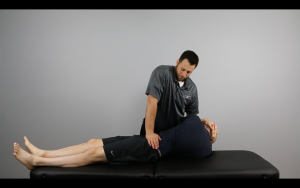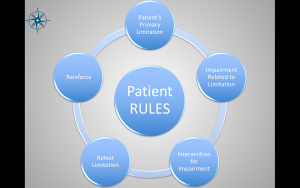Athletic hip patients are one of my favorite populations to treat. It wasn’t always that way though. For years, I struggled with this population, being unsure what to do with them. Even when I improved, I admittedly was a one trick pony, but that one trick led to me getting more and more hips sent to me.
A number of years ago, I read an article from Cibulka et al.1 For me, it was a game changer. In the article, Cibulka discusses performing a manipulation directed at the SI Joint/Lumbar spine. The Manipulation group had a reduction in pain of 3.8/10, while the other group, which had treatment directed at the hip, saw a reduction of .8/10.
I was sold! I started manipulating the SI Joint/Lumbar spine of all my athletes who came in with hip pain. I made a name for myself because these troublesome patients were suddenly seeing rapid improvements! Other therapists and physicians in the area began sending me their athletes with hip pain and I felt like a rock star. I learned my first lesson in how to successfully treat these patients:
 Lesson Number 1
Lesson Number 1
Always check the lumbar spine/SI joint and consider performing a manipulation (as long as there are no contraindications)
As I began to have more and more success with these patients, I also began to see an increasingly complicated caseload of them and I realized, I was a bit of a “1 trick pony” at this point. I had to expand my knowledge and my horizons if I was going to continue to be successful.
Years later, I have learned that there is no one answer for treating athletes with hip pain. There are however patterns, but not every patient falls into the same pattern. I learned about Janda’s work on Lower Cross Syndrome and Rob Wainner’s work to bring the concept of Regional Interdependence to the forefront of our minds.2
What I learned most of all is that while patterns existed, I had to individualize care to every athlete who came in with hip pain. I use the ACE Patient RULES and Treatment Circle to help me with this. These Rules and Treatment Circle are guidelines for my decision making that individualizes care. At the premise, they are a simple: Test, Treat, Retest philosophy individualized to the specific patient in front of you. You must take into account who that person is, including their beliefs, lifestyle, and symptom irritability.
Lesson Number 2
Use your Patient RULES and Treatment Circle to determine the proper pathway for treating.
In Part 2 of this post, I will take you through some of the ways I used these concepts and the specifics behind them to help 2 recent athletes with hip pain. Here’s a preview of an anterior self-mobilization that we used with one of them:
References
- Cibulka MT, Delitto A. A comparison of two different methods to treat hip pain in runners. J Orthop Sports Phys Ther. 1993;17(4):172-176.
- Wainner RS, Whitman JM, Cleland JA, Flynn TW. Regional interdepdendence: a musculoskeletal examination model whose time has come. J Orthop Sports Phys Ther. 2007;37(11):658-660.
